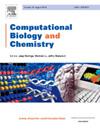Chinese herbal extract Astragalus radix potentiates human ovarian cancer cell cytotoxicity by aggravated ROS production and apoptosis
IF 2.6
4区 生物学
Q2 BIOLOGY
引用次数: 0
Abstract
Background
Ovarian cancer remains one of the most lethal gynaecological malignancies due to its late diagnosis, and resistance to conventional therapies. Traditional Chinese Medicine (TCM) is increasingly explored for its potential in cancer treatment. This study investigates the anti-tumor effects of a Chinese herbal extract on an ovarian cancer cell line in vitro.
Methods
The ovarian cancer cell lines OVCAR-3 and SK-OV-3 treated with varying concentrations of the Chinese herbal extract (Astragalus radix) at different course of time. Cell viability using the MTT assay, and apoptosis was examined by flow cytometry after staining with Annexin V/PI staining. Molecular docking and dynamics were carried out to examine the interaction of quinacetol with a well-known target of ovarian cancer, i.e., phosphoinositide 3-kinase (PI3K).
Results
The Chinese herbal extract Astragalus radix significantly reduced the viability of ovarian cancer cells in a time- and dose- dependent way. Flow cytometry analysis revealed increased apoptotic rates in ovarian cancer cells compared to controls. Quinacetol was found to interact at active site of PI3K with binding energy of −6.9 kcal/mol. The PI3K-quinacetol complex was stable at physiological conditions as evident from molecular simulation studies.
Conclusion
The findings of this study demonstrate that the Chinese herbal extract (Astragalus radix) exhibits potent anti-tumor effects against ovarian cancer cells in vitro, highlighting its potential as an adjunct or alternative therapeutic option. Further in vivo studies in animal models and clinical trials are warranted to explore the efficacy and safety of this herbal treatment in ovarian cancer patients.
中药提取物黄芪通过增强ROS的产生和细胞凋亡而增强人卵巢癌细胞的毒性
由于卵巢癌诊断较晚,且对常规治疗有耐药性,因此它仍然是最致命的妇科恶性肿瘤之一。中医药在癌症治疗中的潜力正日益被发掘。本研究探讨了中药提取物对卵巢癌细胞系的体外抗肿瘤作用。方法用不同浓度的黄芪提取物对卵巢癌细胞株OVCAR-3和SK-OV-3进行不同时间的处理。MTT法检测细胞活力,Annexin V/PI染色后流式细胞术检测细胞凋亡。通过分子对接和动力学研究,研究了喹乙酚与卵巢癌靶点磷酸肌苷激酶(PI3K)的相互作用。结果黄芪提取物能显著降低卵巢癌细胞活力,且呈剂量和时间依赖性。流式细胞术分析显示,与对照组相比,卵巢癌细胞的凋亡率增加。发现喹乙酮在PI3K的活性位点相互作用,结合能为−6.9 kcal/mol。分子模拟研究表明,pi3k -醌乙酚配合物在生理条件下是稳定的。结论黄芪提取物对卵巢癌细胞具有较强的体外抗肿瘤作用,具有辅助治疗或替代治疗的潜力。需要进一步的动物模型和临床试验的体内研究来探索这种草药治疗卵巢癌患者的有效性和安全性。
本文章由计算机程序翻译,如有差异,请以英文原文为准。
求助全文
约1分钟内获得全文
求助全文
来源期刊

Computational Biology and Chemistry
生物-计算机:跨学科应用
CiteScore
6.10
自引率
3.20%
发文量
142
审稿时长
24 days
期刊介绍:
Computational Biology and Chemistry publishes original research papers and review articles in all areas of computational life sciences. High quality research contributions with a major computational component in the areas of nucleic acid and protein sequence research, molecular evolution, molecular genetics (functional genomics and proteomics), theory and practice of either biology-specific or chemical-biology-specific modeling, and structural biology of nucleic acids and proteins are particularly welcome. Exceptionally high quality research work in bioinformatics, systems biology, ecology, computational pharmacology, metabolism, biomedical engineering, epidemiology, and statistical genetics will also be considered.
Given their inherent uncertainty, protein modeling and molecular docking studies should be thoroughly validated. In the absence of experimental results for validation, the use of molecular dynamics simulations along with detailed free energy calculations, for example, should be used as complementary techniques to support the major conclusions. Submissions of premature modeling exercises without additional biological insights will not be considered.
Review articles will generally be commissioned by the editors and should not be submitted to the journal without explicit invitation. However prospective authors are welcome to send a brief (one to three pages) synopsis, which will be evaluated by the editors.
 求助内容:
求助内容: 应助结果提醒方式:
应助结果提醒方式:


